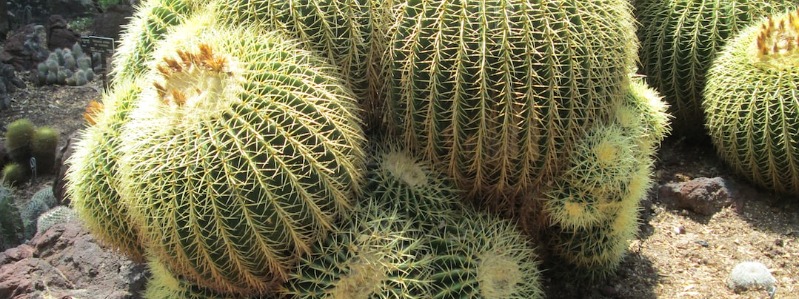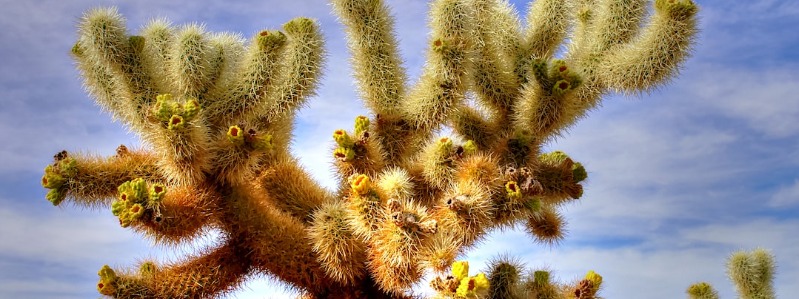Texas Cacti and what you need to know about them.
Contents
- Texas Cacti and what you need to know about them.
- Types Of Cactus In Texas
- Prickly Pear Cactus
- Barrel cactus
- Cholla cactus
- Horse crippler
- Lace cactus
- Living rock cactus
- Nipple beehive cactus
- Nickels’ cactus
- Robust spine beehive cactus
- Eagle claws
- Brown flowered cactus
- Scarlet hedgehog cactus
- Lace hedgehog cactus
- Ladyfinger cactus
- Fendler’s hedgehog
- Green strawberry hedgehog
- Lace hedgehog cactus
- Other types of cactus in Texas are:
- Conclusion:
Cactus plants are marvels of design. These are the most demanding plants in the world. Plants that are specifically designed to survive the harsh conditions of the desert. If a plant is going to survive in the desert, it must learn how to live for long periods without water. It must then use the little water it gets when it rains. And must not lose water or tissue to predators such as grazing animals. The cactus manages to do all these and more with the help of the most incredible tool- spikes. The spikes keep grazing animals from eating the plant and keep the plant from losing moisture through transpiration.
If you are a Texas resident reading this article, you are not here by chance. You must have become curious by seeing so many different types of cacti. Yes, the State of Texas is home to more species of Cactus than any other state in America.
Types Of Cactus In Texas
Many species of cacti are native to Texas. Some of the most common ones include:
- Prickly pear cactus (Opuntia spp.)
- Barrel cactus (Ferocactus spp.)
- Cholla cactus (Cylindropuntia spp.)
- Horse crippler cactus (Echinocactus texensis)
- Lace cactus (Echinocereus reichenbachii)
- Texas rainbow cactus (Echinocereus dasyacanthus)
- Pincushion cactus (Mammillaria spp.)
- Claret cup cactus (Echinocereus triglochidiatus)
- Lace hedgehog cactus (Echinocereus reichenbachii var. fitchii)
- Strawberry hedgehog cactus (Echinocereus engelmannii)
Many more species of cacti are found in Texas, and the exact types of cacti that grow in a particular region will depend on factors such as climate, soil type, and elevation.
Prickly Pear Cactus
(Opuntia spp.) Prickly pear cactus, also known as Opuntia, is a common species of cactus that is native to Texas, as well as other parts of North America, Central America, and South America. Several species of prickly pear cactus are found in Texas, and they are known for their distinctive flat, rounded pads and clusters of spiny, pear-shaped fruits.

The prickly pear cactus is a hardy plant that can survive in various climates and soil types. It is often found in arid or semiarid regions and is commonly seen in grasslands, deserts, and scrubland. The cactus pads and fruits are a valuable food source for wildlife, including birds, rodents, and insects.
In addition to its ecological importance, the prickly pear cactus has cultural significance for many Native American tribes in Texas and beyond. The plant has been used for food, medicine, and even dye. For example, the fruit of the prickly pear cactus is often used in traditional Mexican cuisine, and the pads can be boiled or grilled and eaten as a vegetable. The cactus has also been used to treat various ailments, such as wounds, infections, and digestive issues.
However, it’s important to note that while prickly pear cactus has many benefits, it can also be a nuisance for people who come into contact with it. The spines on the cactus pads and fruits can cause painful injuries, and the plant can also become invasive in some areas. As with all wild plants, it’s essential to exercise caution and respect when interacting with prickly pear cactus in its natural habitat.
Barrel cactus
(Ferocactus Spp.) There are several species of barrel cactus, but some of the most common ones in Texas include the fishhook barrel cactus (Ferocactus hamatacanthus) and the Mexican barrel cactus (Ferocactus pilosus). These cacti are well-adapted to arid conditions and can survive in hot, dry environments where other plants might struggle to grow.

One of the most notable features of barrel cactus is their spines, which can be long, sharp, and densely packed. These spines help protect the cactus from animals that might try to eat it, as well as from the intense sunlight and heat of its environment. The spines can also make the cactus challenging to approach or touch humans.
Like other cacti, barrel cacti can also provide food and medicine. The cactus’s fruit is edible and often used in traditional Mexican cuisine, while the plant has been used for medicinal purposes by Native American tribes for centuries. For example, fruit pulp and seeds have anti-inflammatory and analgesic properties, while the roots and stems of the plant have been used to treat various ailments.
Cholla cactus
(Cylindropuntia spp.) Cholla cactus, also known as jumping cactus, is a type of cactus that is native to the southwestern United States, including Texas, as well as Mexico. They are known for their distinctive segmented stems, which are covered in sharp, barbed spines that can easily detach from the plant and stick to anything that brushes against them, including animals and humans.

There are several species of cholla cactus, including the teddy bear cholla (Cylindropuntia bigelovii) and the jumping cholla (Cylindropuntia fulgida). These cacti are well-adapted to arid conditions and can survive in hot, dry environments where other plants might struggle to grow.
Tree Cholla
(Cylindropuntia imbricata) This is a giant species of the cactus plant. Instead of staying close to the ground, the cactus grows into a big shrub or can even be described as a tree. The enduring feature of the cacti characterizes it: the pointy spikes protruding out of its branches. Many birds seeking shelter from predators have found themselves suddenly impaled by the pointy spikes.
Christmas Cholla
(Cylindropuntia leptocaulis) The Christmas cholla is a species of cactus that is closely related to the tree cholla which we have described above. It produces branches that are laden with deadly points of its spikes. But unlike its cousin, this variety does not grow into a tree. It remains close to the ground and can be described as a small shrub.
Horse crippler
(Echinocactus texensis) The horse crippler is a kind of cactus plant that is similar to the eagle claw in size and also similar because of the purple flower which sits on top of it like a crown. In this species, you can also see the greenery of the cactus, although this variety has a somewhat flattish appearance. It gets its name for its effect on horses who step on it.
Lace cactus
(Echinocereus reichenbachii) The lace cactus (also known as lace hedgehog cactus) is a small cactus species native to the Chihuahuan desert of Texas, New Mexico, and northern Mexico. It gets its name from its delicate, lacy appearance, spherical or cylindrical shape, and covering of small spines resembling white or gray hairs.

The lace cactus typically grows about 6-8 inches in height and produces beautiful flowers in shades of pink, red, or purple that bloom from late spring to early summer. It prefers well-drained soil and a sunny location, making it well-suited for xeriscaping and other low-water landscaping techniques.
Living rock cactus
(Ariocarpus fissuratus) Look at the name again: ‘Living Rock’- and that is exactly what it is. Not a big rock, of course, but to the glancing eye, this plant can look like a rock that a person might pick up and throw. It largely sticks to the ground and has a flat, circular shape. The pointy leaves of this plant overlap perfectly to give a kind of scaly feel. The plant has brownish outer leaves, while the green ones stay in the center.
Nipple beehive cactus
(Coryphantha macromeris) The nipple beehive cactus plant has small nipple-like balls (down the evolutionary timeline, these could have been leaves), which are well protected by sharp pointy needles. The needles try to form a small ball that looks like a small beehive.
Nickels’ cactus
(Coryphantha nickelsiae) Nickles cactus are small cactus plants that look like brown balls of pointy needles pointing in every direction. All that pointiness is to protect the little greenery that this plant has. The plant does not grow tall but stays close to the ground.
Robust spine beehive cactus
(Coryphantha robustispina) This type of cactus bears a good resemblance to the nickles cactus, which we have described above. The major difference is that this one grows into not one ball of brown needles, but several balls huddled together. This may give the appearance of a large beehive or of several small beehives standing together.
Eagle claws
(Echinocactus horizonthalonius) This cactus plant looks more like a poppy plant. As a significant difference to any of the types of cacti that we have highlighted above, you can see the small green ball on the floor, with a small purple or violet flower on the top. But do not be tempted to pick it up; this plant is armed with sharp needle-like spikes that will do the damage.
Brown flowered cactus
(Echinocereus Chloranthus) The brown flowered cactus has greenery, although that greenery is wholly covered with brown spikes. This is a cousin of the Nipple beehive cactus and the robust spine cactus species. This one is more beautiful, however, because it has purple, funnel-shaped flowers around its body.
Scarlet hedgehog cactus
(Echinocereus coccineus) The scarlet hedgehog cactus has brown spikes roughly the size of a hedgehog or squirrel. While the main structure is brownish, the plant is decorated on all sides with small round flowers, which give it a touch of beauty.
Lace hedgehog cactus
(Echinocereus reichenbachii) This type of cactus brings to mind small whitish balls that are clustered together. The balls have a white appearance because the spikes are white, are so many, and are closely huddled together. On top of the individual balls are funnel-shaped flowers made of individual petals that overlap closely to form a funnel.
Ladyfinger cactus
(Echinocereus pentalophus) This type of cactus is about the size of a football but has small protrusions, like studs, on all sides. The whole plant is covered with white or cream-colored spikes to protect the valuable center.
Fendler’s hedgehog
(Echinocereus fendleri) This type of cactus is a couple of oblong balls that stand upright and are not too closely huddled together. They protrude long spikes from the bodies but are not too densely packed together.
Green strawberry hedgehog
(Echinocereus enneacanthus) This is one of the more popular and widely distributed types of cactus. It stands upright and can grow to about 3 feet. The stalk is smooth and long, while long needles come out of its body, although quite sparsely.
Lace hedgehog cactus
(Echinocereus reichenbachii) Lace hedgehog cactus are very similar to Fendler’s hedgehog (Echinocereus fendleri), which we have already described above. This can also be described as a couple of oblong balls that stand upright and are well-spaced. The significant difference is that the spikes or needles on this particular species are much shorter, and the body of this species has a much greener look.
Other types of cactus in Texas are:
- Strawberry hedgehog cactus (Echinocereus stramineus)
- Nylon hedgehog cactus (Echinocereus viridiflorus)
- Warnock’s fishhook cactus (Echinomastus warnockii)
- button cactus (Epithelantha micromeris)
- Cob beehive cactus (Escobaria tuberculosa)
- Big Bend prickly pear (Grusonia aggeria)
- Chihuahuan fishhook cactus (Glandulicactus uncinatus)
- Arizona barrel cactus (Ferocactus wislizeni)
- Texas barrel cactus (Ferocactus hamatacanthus)
- Common beehive cactus (Escobaria vivipara)
- Devil cholla (Grusonia Emoryi)
- Graham’s club cholla (Grusonia grahamii)
- Arizona fishhook cactus (Mammillaria grahamii)
- lacespine pincushion cactus (Mammillaria lasiacantha)
- Little pincushion cactus (Mammillaria meiacantha)
- rat-tail pincushion cactus
- rat-tail pincushion cactus (Mammillaria pottsii)
- Chenille prickly pear (Opuntia aciculata)
- Rio Grande prickly pear (Opuntia aureispina)
- Purple prickly pear (Opuntia azurea)
Conclusion:
This is not an exhaustive list of types of cacti in Texas. The first section is some of the types of cactus that you are likely to run into in Texas. Following that, we also mention other types that are not necessarily less popular or abundant and may or may not be as well distributed as those highlighted above.


What is the name of the cactus on the cover page of this website? Would have been better to see pictures with the cactus plants.
the top image is “Cereus Peruvianus”
Wondering which cactus grows the largest flower?